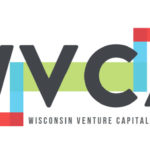Introduction

The Wisconsin Venture Capital Association was originally founded in 2002 but fell dormant over the years. In 2017, after several investors saw a need to increase the availability of capital and provide networking opportunities among VCs, entrepreneurs and research institutions, the organization rebooted.
To improve conditions for the venture capital sector and encourage collaboration in Wisconsin’s entrepreneurial ecosystem, the WVCA will focus on network, advocacy, recognition and investor relations.
Network
It’s important for investors in Wisconsin to network and collaborate to achieve success. This can be achieved through regular forums, conferences and other events that discuss current topics impacting the industry and deals needing participants.
One example occurred this summer when NVNG Investment Advisors hosted a “Venture Capital through the Midwest” online panel. The topics of discussion included the increase of deal flows in the Midwest, digital transformation between large corporations and startups and the immense amount of talent in the Midwest region were discussed.
Another example of where strong working relationships, syndication and consensus around issues took place was at the virtual 2020 Summerfest Tech Conference. Now in its third year, the event focused on diversity and inclusion in the startup industry, growth modeling and the rise in corporate capital.
Advocacy
Accelerators, angel investors, venture capitalists and institutional investors in Wisconsin’s entrepreneurial ecosystem need a united voice to policymakers. For example, state law previously required University of Wisconsin faculty-led startups to undergo a 45-day review for any contract that exceeded $250,000 over two years, and that review process unnecessarily slowed down the process. Assembly Bill 38 now streamlines this process.
Meanwhile, Senate Bill 208 clarified Wisconsin’s Act 255 investor tax credit law by matching language pertaining to how the credits can be used, especially by insurance companies that may invest in young companies.
To make sure Wisconsin’s economy relies on creating a vibrant and supportive entrepreneurial environment, the Wisconsin Economic Development Corporation (WEDC) made updates to its Qualified New Business Ventures (QNBV) program, stating that Wisconsin early-stage companies that are certified as QNBV and incorporated as C-corporations in other states will no longer have to pay additional assessment feeds under a new state law.
Recognition
To increase entrepreneurship and participation in the venture capital asset class, role models and success stories in Wisconsin should be recognized. One example is Propeller Health, makers of a sensor that attaches to an inhaler. It was acquired by San Diego-based medical device giant ResMed in December 2018 for $225 million.
Software company JAMF, which was founded in Eau Claire, was acquired in 2017 and recently reached a market cap of approximately $4.6 billion. (JAMF is now located in Minnesota.)
Also, tech companies like PerBlue and EatStreet continue their successes, with the former selling a video game to Disney for $28 million and the latter raising $45 million in venture capital funding.
Investor Relations
To build investor interest in Wisconsin, institutions and family offices that are capable of investing in the sector need to be made aware of the opportunities in the state. Fortunately, we are seeing a trend in the right direction.
Over the last few years, we’ve seen VCs raising additional funds, as well as the launch of new funds like the Winnow Fund. As part of the Badger Fund of Funds, the Winnow Fund has a focus on creating startups based on ideas developed at universities across the state, and it raised money from The Capital Times, Johnsonville Ventures and MGE Energy, among others.
According to a report by the Wisconsin Technology Council, average round size reached an all-time high of $3.8 million in 2019, while a larger share of companies (41.5%) raised funding for the first time. Still, there are many more opportunities for investors to uncover.


